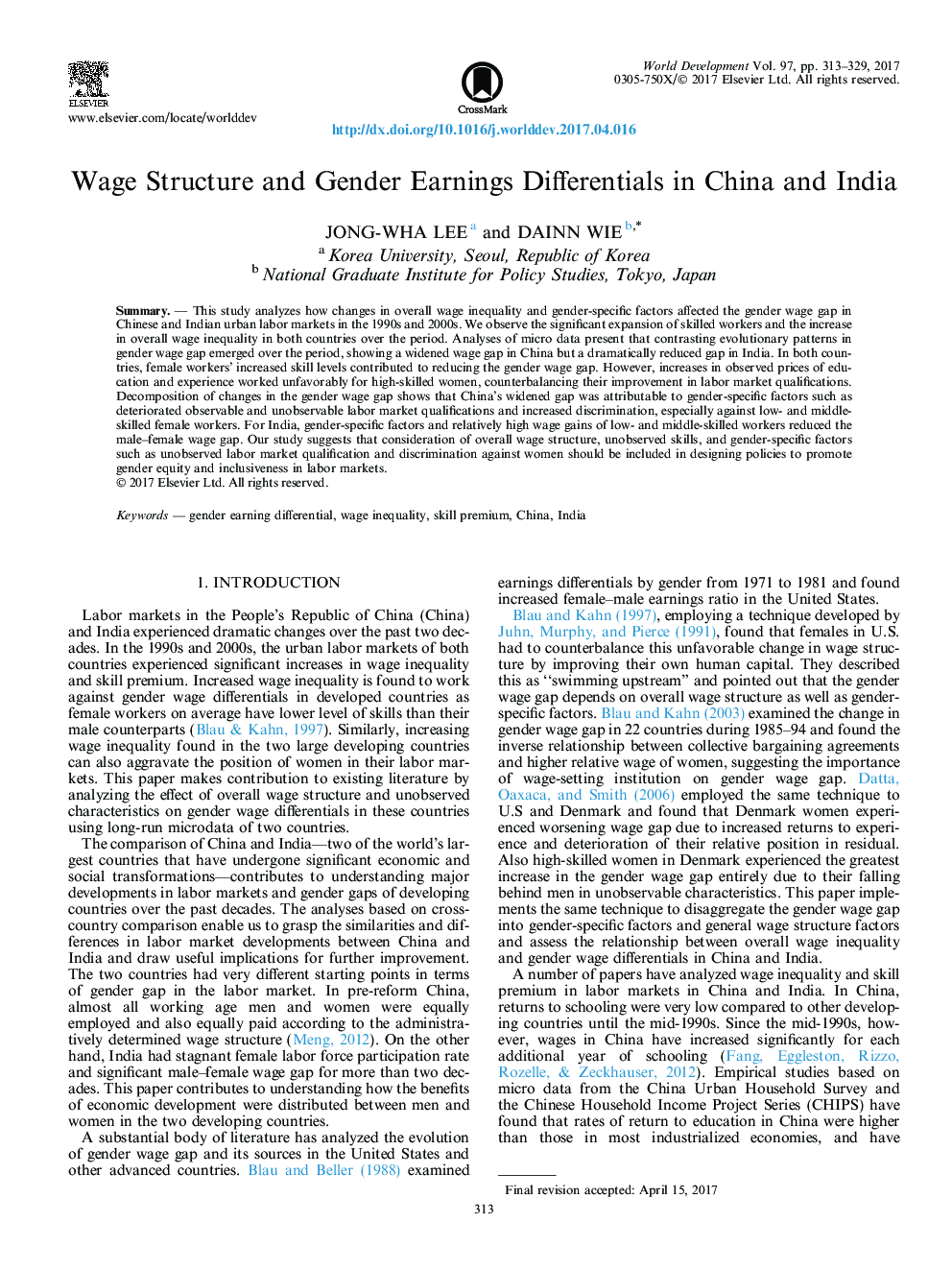| Article ID | Journal | Published Year | Pages | File Type |
|---|---|---|---|---|
| 5105189 | World Development | 2017 | 17 Pages |
Abstract
This study analyzes how changes in overall wage inequality and gender-specific factors affected the gender wage gap in Chinese and Indian urban labor markets in the 1990s and 2000s. We observe the significant expansion of skilled workers and the increase in overall wage inequality in both countries over the period. Analyses of micro data present that contrasting evolutionary patterns in gender wage gap emerged over the period, showing a widened wage gap in China but a dramatically reduced gap in India. In both countries, female workers' increased skill levels contributed to reducing the gender wage gap. However, increases in observed prices of education and experience worked unfavorably for high-skilled women, counterbalancing their improvement in labor market qualifications. Decomposition of changes in the gender wage gap shows that China's widened gap was attributable to gender-specific factors such as deteriorated observable and unobservable labor market qualifications and increased discrimination, especially against low- and middle-skilled female workers. For India, gender-specific factors and relatively high wage gains of low- and middle-skilled workers reduced the male-female wage gap. Our study suggests that consideration of overall wage structure, unobserved skills, and gender-specific factors such as unobserved labor market qualification and discrimination against women should be included in designing policies to promote gender equity and inclusiveness in labor markets.
Related Topics
Social Sciences and Humanities
Economics, Econometrics and Finance
Economics and Econometrics
Authors
Jong-Wha LEE, Dainn Wie,
